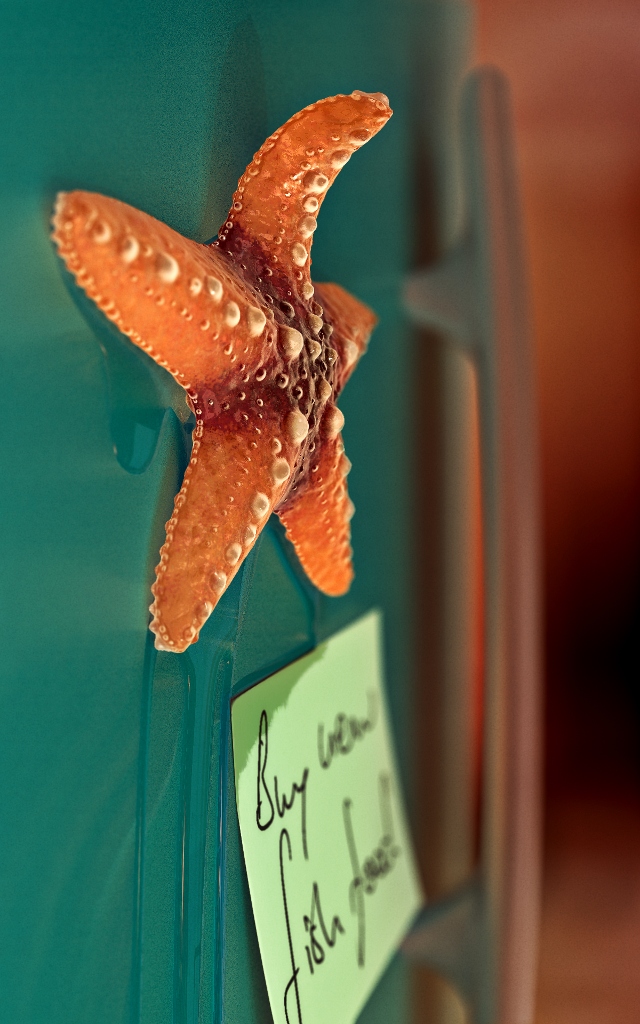I just finished the scene for the Starfish I did some time ago to show the possibilities of Material Nodes in Blender. Rendertime was horrible (> 30 hours, I can’t give any exact number because I paused the render a few times to work on my windows partition which confuses the render-time counter of Blender). Simple reason: Node-Material with about 5 different materials on a glossy reflection surface with about 20 passes, giving about 20×5 reflections per pixel to compute (most of them with SSS).

Hope you like it.
In this case, the workflow was:
- Render to multilayer exr
- Load result into new blender-file only for compositing
- Composite basics (depth of field, gamma curve, saturation)
- Try some changes for parts of the image in Gimp
- Export manipulation masks from Gimp
- Imitate Gimp-manipulation inside the Blender compositor using the masks from Gimp
- Compute final composition (takes some minutes with the heavy dof)
- Postwork in Gimp (e.g. wet paper after a hint from the forum, hand-antialiasing on important edges (full sample is not possible here, so rendering at 1,5x the size, scaling down and then hand-antialiasing is the method of choice))
And if someone is interested, a commented Node-setup:

Be First to Comment